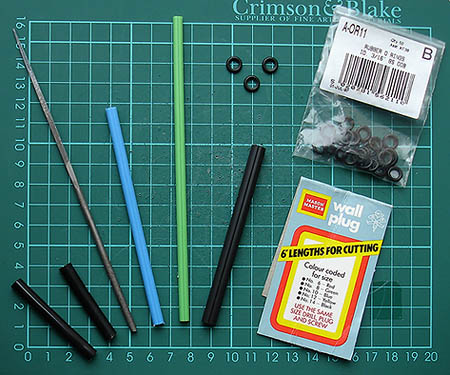
Building Simple Centring Adjusters For Microscope Rotating Stages.
A Topical Tip.
By Ian Walker. UK.
Introduction.
Some microscopes like old Zeiss's of the 1970's need special square section keys to fit the centring adjusters of the rotating stage. These often get lost when ownership is passed on and a check on eBay etc shows they don't come up that often and when they do they seem to sell for over inflated prices considering what they are. A rotating stage properly set up should remain centred for some time so a simple cheap tool would be useful since without one, stage adjustment is quite difficult. It also useful having two adjusters making the job much easier than removing one and transferring to each side of the stage. LOMO sensibly chose to integrate the adjusters as proper knurled plastic adjustment controls as part of the stage assembly but no such luck with manufacturers like Zeiss!
Materials.

Materials including square section needle file, wall plugs and rubber 'O' rings.
Wall plugs for allowing objects to be hung on plastered and brick walls by drilling a hole with an electric drill then hammering home a short piece of plastic tubing can be brought into use on the microscope. They come in different colours denoting their diameter for correct matching with drills, I have shown three types but they also come in yellow, red etc. Being plastic they are easily worked and a finished adjuster can be made in a very short time. The plastic tubes are given numbers so blue is No.10 and black No.14 along with the colour these are also used to identify the drill you would use with the tubing.
The picture above shows the simple materials needed, in fact at its most basic level, find a piece of plastic wall plug that fits the square pin on your scope, cut two short pieces off and start adjusting! The fluted outer of the wall plugs provide a hand grip and the inner cross-section of the plug conveniently fits around the square pin. On an old Zeiss scope I have, I found the thicker black No.14 wall plug fitted well without modification and is good enough to make the adjustments. However, I wanted to make a slightly more refined version so I took the 'design' a couple of stages further as shown below.
The length can be chosen for convenience but I chose 20mm for my adjusters and cut off the sections with a fine hacksaw using the smaller diameter No.10 blue wall plug, then I filed out a square section down the tube using a tapered needle file; the tapering is useful as you push the adjuster on since it grips the further you push the adjuster on the metal pin. Add a couple of rubber 'O' rings and a piece of heat shrink tubing to offer a bit more strength to the adjuster and that's it. To cover the end of the cut section I punched out two pieces of black card with a paper punch and glued them on the end; this can be easily seen in the completed adjuster shown in the last picture on the microscope.
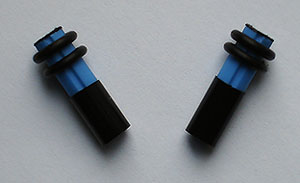
Completed rotating stage centring adjusters, the rings can be moved about for best grip as shown left and right.
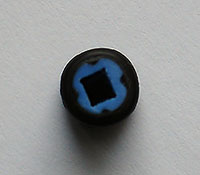
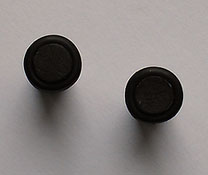
Adjusting end filed out with a needle file and tops of the completed adjusters.
The square hole tapers as it moves into the tube providing grip on the metal pin
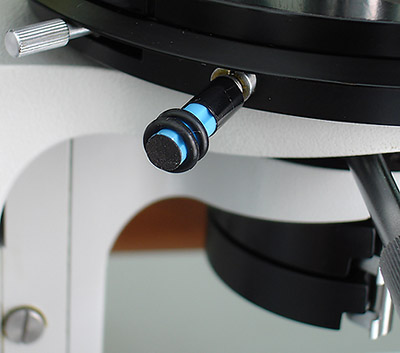
Adjuster fitted to an old Zeiss microscope with the extra grip provided by rubber 'O' rings.
So with a minimum amount of tools and effort we can have two neat very light adjusters for virtually free and much better than trying to use a pair of pliers or the like clamped on the end of the stage adjusting pins, possibly losing your grip and damaging the microscope paintwork.
Comments to the author, Ian Walker, are welcomed.
Published in the March 2006 edition of Micscape.
Please report any Web problems or offer general comments to the Micscape Editor .
Micscape is the on-line monthly magazine of the Microscopy UK web site at Microscopy-UK
© Onview.net Ltd, Microscopy-UK, and all contributors 1995
onwards. All rights reserved.
Main site is
at www.microscopy-uk.org.uk
with full mirror
at www.microscopy-uk.net